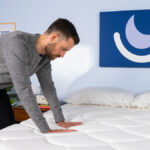The right mattress can make the difference between a restless night and a restful one, especially for people who experience back pain. Given that an unsupportive mattress can aggravate back pain, it’s crucial for sleepers to find a bed that supports neutral spinal alignment and cushions tender pressure points.
This guide offers an overview of the best mattresses for back pain. If you’re a side sleeper with back pain or you’re navigating the added challenge of finding the best mattress for back pain caused by arthritis, we have more in-depth guides to help you find your ideal match.
The Best Mattresses for Back Pain
-
Best Overall Mattress
–
WinkBeds EcoCloud
View Details
-
Best Value Mattress
–
Brooklyn Bedding Signature Hybrid
View Details
-
Most Comfortable Mattress
–
DreamCloud Premier Memory Foam Mattress
View Details
-
Best Luxury Mattress
–
Saatva Rx
View Details
-
Best Mattress for Side Sleepers
–
Bear Elite Hybrid
View Details
-
Best Mattress for Spinal Alignment
–
Back Science Series 2 Mattress
View Details
-
Best Extra Firm Mattress
–
Plank Firm
View Details
-
Best Mattress for Pressure Relief
–
FloBeds vZone 12″ Natural Latex Mattress
View Details
Swipe for more
Best Overall Mattress
WinkBeds EcoCloud
Get $300 off all mattresses at Winkbeds
Get $300 off all mattresses at Winkbeds
WinkBeds’ EcoCloud delivers a balanced latex hybrid design that cushions the body with zoned support and alleviates sore spots along the spine. Other highlights include excellent temperature control, a sturdy perimeter, and easy movement across the surface — all at a reasonable price-point.
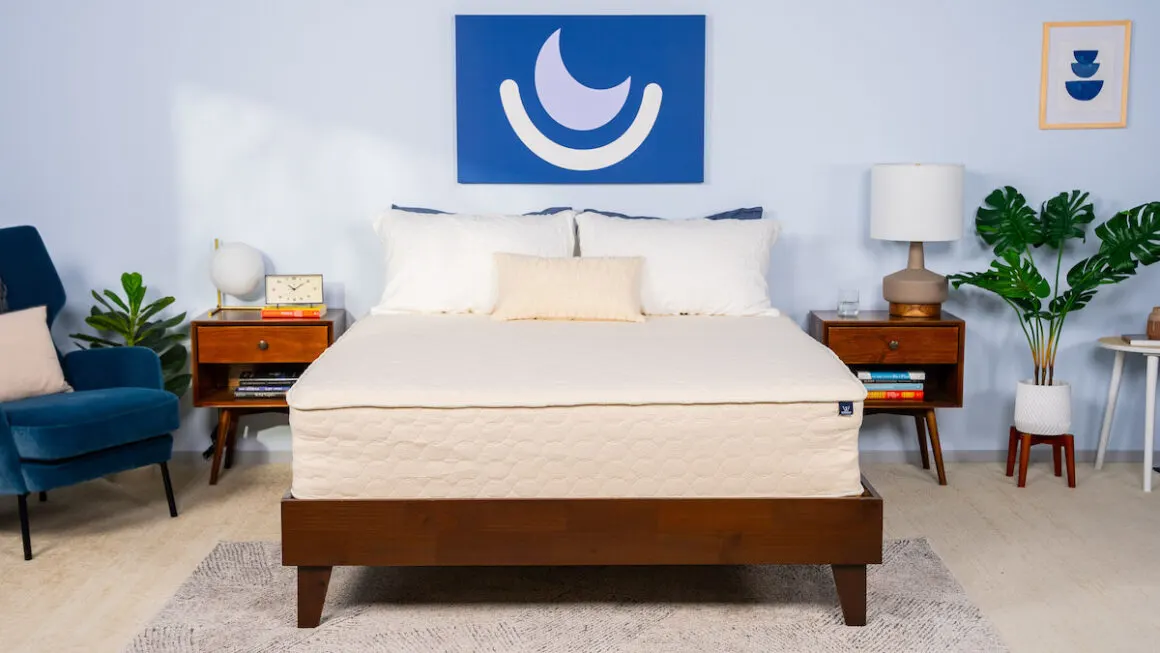
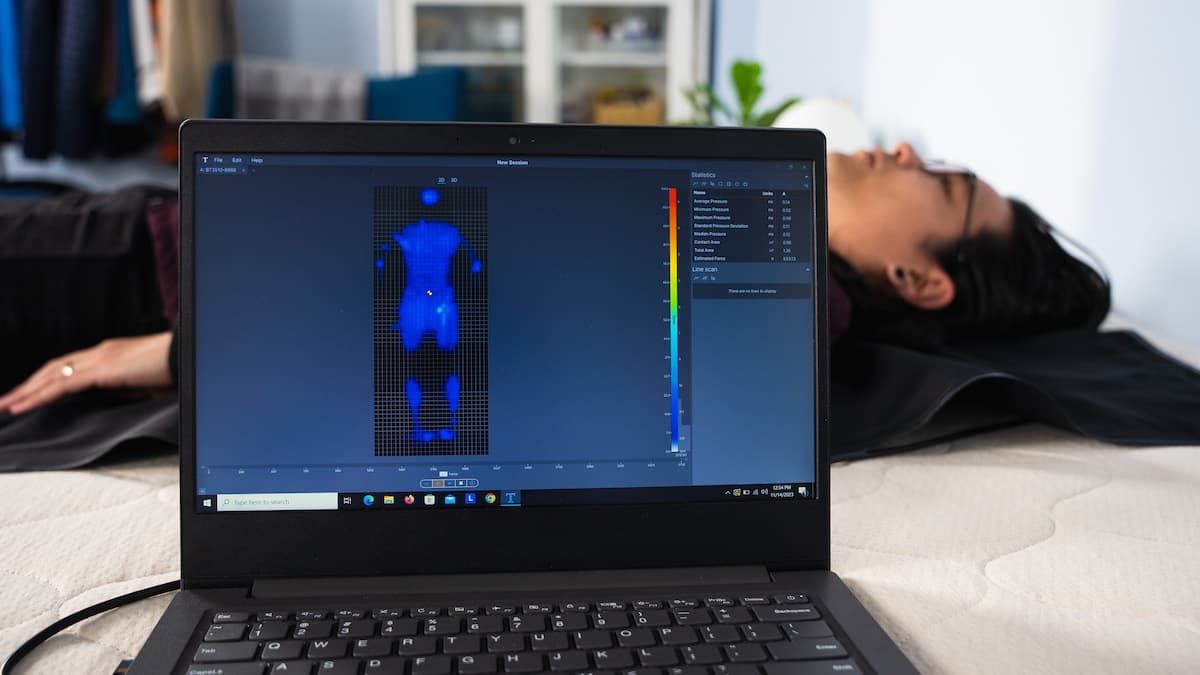
Ideal For
Side Sleepers
Firmness
Medium (5)
Pain Relief
Excellent
Value
Great Value
Pros & Cons

-
Pros
-
Latex comfort system provides softer cushioning for the hips and shoulders, with firmer support for the lower back and midsection
-
Zoned pocketed coils in the support core aid spinal alignment
-
Firmer coils around the bed’s perimeter enhance edge support
-
-
Cons
-
May be too soft for sleepers over 230 pounds
-
Sleep partners may feel each other’s movements on the other side of the bed
-
Our Take

During hands-on tests, the EcoCloud earned its most favorable ratings from side and back sleepers weighing up to 230 pounds. Extra cushioning beneath the shoulders and hips helps ensure even alignment and less pressure for side sleepers, while the mattress is firm and supportive enough to maintain an even surface for back sleepers. Most of our stomach sleepers and testers over 230 pounds found the EcoCloud a bit too soft.
Why We Like It
If you struggle with back pain, you should consider a zoned mattress that provides extra support beneath your torso and hips. The WinkBeds EcoCloud features a latex comfort layer and pocketed coil base, both of which are zoned to keep your entire body on an even plane. A medium (5) feel ensures plenty of cushioning to reduce pain and pressure in your upper and lower back, but the mattress is robust and responsive enough to prevent excessive sinkage.
Standout Features
We awarded high marks for ease of movement and edge support. Since the Talalay latex is light and responsive, none of us felt stuck when scooting across the surface, and most noted little to no sinkage when sitting along the perimeter to mimic getting in and out of bed. Our temperature control tests also indicate the mattress sleeps very cool even by latex hybrid standards.
Sleeper Type Ratings

The ratings below indicate how suitable this mattress is for different sleeping positions and sleeper weights, taking into account factors such as support and pressure relief.
Best Value Mattress
Brooklyn Bedding Signature Hybrid
25% off sitewide with code: SUMMER25
25% off sitewide with code: SUMMER25
The Brooklyn Bedding Signature Hybrid’s adaptive foam layers contour evenly, distribute your weight, and reduce pain along your spine. You can choose from medium soft (4), medium firm (6), and firm (8) designs based on your sleep position and body type.
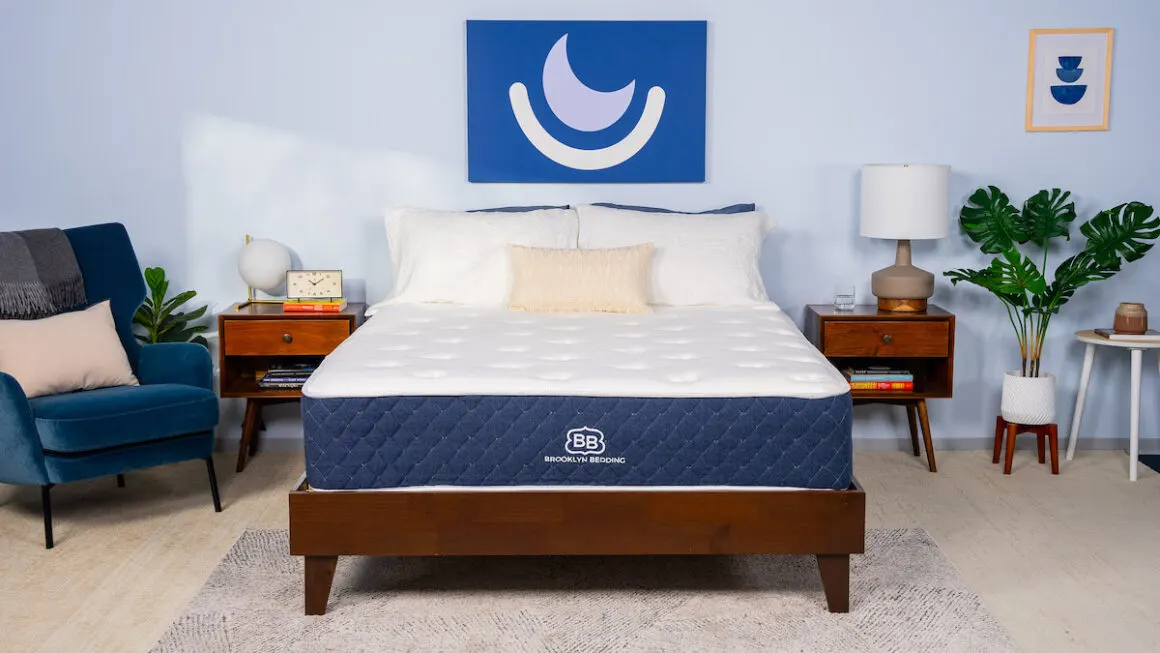
Ideal For
Couples
Firmness
Medium Soft (4), Medium Firm (6), Firm (8)
Pain Relief
Great
Value
Great Value
Pros & Cons

-
Pros
-
Foam comfort layers gently cushion pressure points
-
Below-average price-point for a hybrid
-
-
Cons
-
Foam may off-gas in first few days
-
Returns incur a fee
-
Our Take

The Signature does not contain any memory foam, but instead features a comfort system with proprietary TitanFlex and VariFlex polyfoam layers. Our tests show these materials cushion the body without a deep “hug,” making the Signature Hybrid a good option for anyone who prefers a plush sleep surface but sinks too much on memory foam.
Why We Like It
If you frequently wake up with soreness in the upper or lower back, your mattress might be a major factor. Excessive sinkage – especially around the torso and hips – can contribute to back pain. The Brooklyn Bedding Signature Hybrid is a model from this company with multiple firmness options to suit sleepers with different needs.
Sleeper Type Ratings

The ratings below indicate how suitable this mattress is for different sleeping positions and sleeper weights, taking into account factors such as support and pressure relief.
Most Comfortable Mattress
DreamCloud Premier Memory Foam Mattress
Up to 50% off at DreamCloud
Up to 50% off at DreamCloud
The DreamCloud Premier Memory Foam Mattress offers excellent contouring, with a medium firm (6) feel that makes it a touch firmer than some of the other all-foam beds we’ve tested. It’s a good fit for people who need the best of both worlds when it comes to cushioning and sturdiness.

Ideal For
Couples
Firmness
Medium Firm
Pain Relief
Excellent
Value
Good Value
Pros & Cons

-
Pros
-
Strong motion isolation is ideal for couples
-
365-night sleep trial
-
-
Cons
-
Foam is prone to heat retention
-
Some sleepers may notice slight off-gassing smell at first
-
Our Take

The DreamCloud Premier Memory Foam Mattress has a soft and breathable cashmere blend cover quilted with polyfoam and memory foam layers, creating a plush feel on the surface. Underneath is a layer of memory foam that softens and conforms closely to your body, followed by a firmer polyfoam layer that prevents too much sinkage. A thick support core made of high-density polyfoam stabilizes the entire bed. Note that the mattress also comes in a hybrid version if you prefer the enhanced support of coils.
Why We Like It
The DreamCloud Premier Memory Foam Mattress is an all-foam model that delivers strong cushioning without sacrificing support. It’s an optimal choice for sleepers who enjoy deep cradling for sensitive joints but find competing foam beds too soft.
Standout Feature
A standout feature of this medium firm (6) mattress is the strong pressure relief, which we credit to the cushioned, quilted surface.
Sleeper Type Ratings

The ratings below indicate how suitable this mattress is for different sleeping positions and sleeper weights, taking into account factors such as support and pressure relief.
Best Luxury Mattress
Saatva Rx
15% off orders of $1,000 or more
15% off orders of $1,000 or more
The Saatva Rx is one of the only mainstream mattresses specifically designed for people with chronic or frequent back pain. Plush foam layers cradle your body to alleviate aches and soreness in the lumbar region, while sturdy coils create a stable base layer without making the mattress feel overly stiff.


Ideal For
Side Sleepers
Firmness
Medium Soft
Pain Relief
Excellent
Value
Fair Value
Pros & Cons

-
Pros
-
Dense lumbar pad alleviates pain and pressure in the lower back
-
Foam-tipped coils minimize motion transfer to prevent sleep disturbances for couples
-
All orders include a 365-night trial and free White Glove delivery
-
-
Cons
-
Most back and stomach sleepers will find the mattress too soft
-
Sticker price is much more expensive than average
-
Our Take

The Rx’s comfort system begins with a dense memory foam pad located beneath your lumbar region to cushion your lower back. A thick polyfoam layer and microcoil transitional layer add to the plush surface feel. You’ll notice deep cradling as your body settles into the mattress and these materials adapt to your unique curves.
Why We Like It
The Saatva Rx is one of the plushest, most adaptive hybrids on the market today. A medium soft (4) feel and thick foam layers ensure a deep cradle for your body, while a memory foam lumbar pad and multi-zone coils provide gentle pushback in areas prone to sharp pressure points. The price-point is somewhat high for a hybrid, but if you’re losing sleep due to upper or lower back pain, this may be worth the investment.
Standout Features
Since the Rx is so soft, it earned high marks for motion isolation and pressure relief – two testing categories where hybrids often underperform. At the same time, edge support is somewhat lacking and the surface may sink when you move on the mattress. Our team didn’t notice excessive heat retention, but the mattress sleeps warmer than most competing hybrids despite steady airflow through both coil layers.
Sleeper Type Ratings

The ratings below indicate how suitable this mattress is for different sleeping positions and sleeper weights, taking into account factors such as support and pressure relief.
Best Mattress for Side Sleepers
Bear Elite Hybrid
35% off + free pillows with code: SF35
35% off + free pillows with code: SF35
The Bear Elite Hybrid combines adaptive memory foam with multi-zone support layers, making it a solid choice for side sleepers who need extra cushioning for their shoulders and hips without too much hug. Three firmness levels allow you to choose the best option based on your body type.
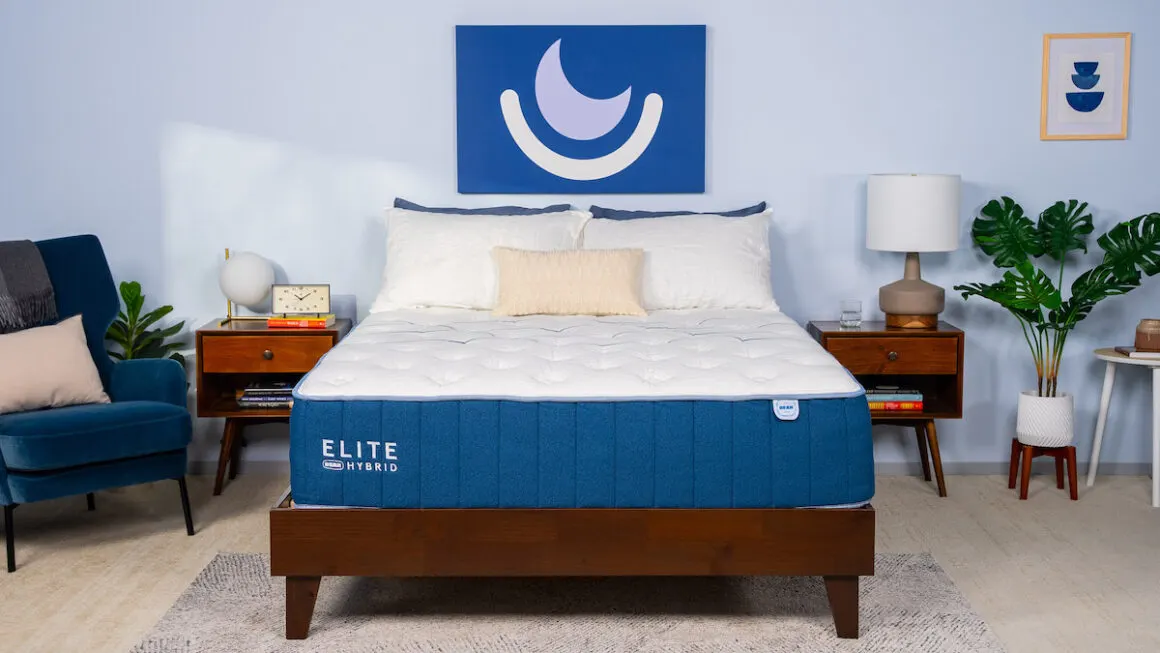
Ideal For
Side Sleepers
Firmness
Medium (5), Medium Firm (6), Firm (8)
Pain Relief
Great
Value
Great Value
Pros & Cons

-
Pros
-
Zoned support layers push back against heavier areas of the body
-
Three firmness options to accommodate different types of sleepers
-
Cooling materials help the surface maintain a comfortable temperature
-
-
Cons
-
Strong off-gassing for the first few nights
-
Limited options for people seeking an exceptionally soft mattress
-
Our Take

Despite their similar designs, you’ll notice a distinct balance of cushioning and pushback on all three of the Bear Elite Hybrid’s firmness levels. The medium design provides close contouring, the firm feels quite robust, and the medium firm is a nice compromise between the other two. Since the transitional polyfoam and pocketed coil layers feel firmer around the midsection, people with extra weight in their torsos and hips should feel comfortable and properly supported on the medium firm or firm designs.
Why We Like It
As many side sleepers know, this position leaves them vulnerable to back pain — and the wrong mattress can make this issue even worse. Bear’s Elite Hybrid offers a design that’s both adaptive and sturdy, with a surface layer that contours evenly and zoned construction in the transitional foam and pocketed coils. You can choose from medium (5), medium firm (6), and firm (8) designs based on how much you weigh and your preferred cushioning level.
Standout Feature
We found that the Elite Hybrid excels at temperature control. This can be attributed to a phase change cover that dissipates heat on contact, breathable foams in the comfort system, and steady airflow throughout the coil system. Couples seeking a mattress that isolates motion well should opt for the medium model, whereas the medium firm and firm mattresses performed better in categories like edge support and ease of movement.
Sleeper Type Ratings

The ratings below indicate how suitable this mattress is for different sleeping positions and sleeper weights, taking into account factors such as support and pressure relief.
Best Mattress for Spinal Alignment
Back Science Series 2 Mattress
Check Price at Back Science
Check Price at Back Science
The Back Science Series 2 Mattress emerged from the vision of an experienced chiropractor dedicated to designing a mattress that could help address back pain. With hybrid construction and targeted lumbar cushioning, its layers work together to enhance spinal support.

Ideal For
Back Sleepers
Firmness
Firm (7)
Pain Relief
Excellent
Value
Fair Value
Pros & Cons

-
Pros
-
Specifically engineered to address back pain
-
Zoned lumbar support helps properly position the lower back
-
365-night sleep trial
-
-
Cons
-
Above-average price-point
-
May feel too firm for some side sleepers
-
Our Take

The Back Science Series 2 Mattress has a Firm (7) feel but doesn’t feel too hard. It has light springiness and doesn’t feel too bouncy. The mattress resists sinkage, including around the perimeter. In our tests, it showed solid temperature regulation but did transfer some motion across the mattress surface. Taken together, most of our testers said that the Back Science Series 2 Mattress felt both supportive and comfortable.
Why We Like It
One of the keys to avoiding back pain is keeping the spine in a neutral position during sleep. With proper spinal alignment, there’s less stress on the muscles and vertebrae. The Back Science Series 2 Mattress was designed specifically to try to support the spine and limit tension that can lead to aches and pains.
Standout Feature
The Back Science Series 2 Mattress uses robust materials that give it a solid all-around performance. For our testing team, the mattress felt stable and supportive with light cushioning of key pressure points like the shoulder, hips, and lumbar spine.
Sleeper Type Ratings

The ratings below indicate how suitable this mattress is for different sleeping positions and sleeper weights, taking into account factors such as support and pressure relief.
Best Extra Firm Mattress
Plank Firm
25% off sitewide with code: SUMMER25
25% off sitewide with code: SUMMER25
Brooklyn Bedding’s Plank Firm is a flippable all-foam mattress with firm (7) and extra firm (9) sides. Both surfaces provide excellent support, especially for people who weigh more than 230 pounds and tend to sink too much on softer foam mattresses.
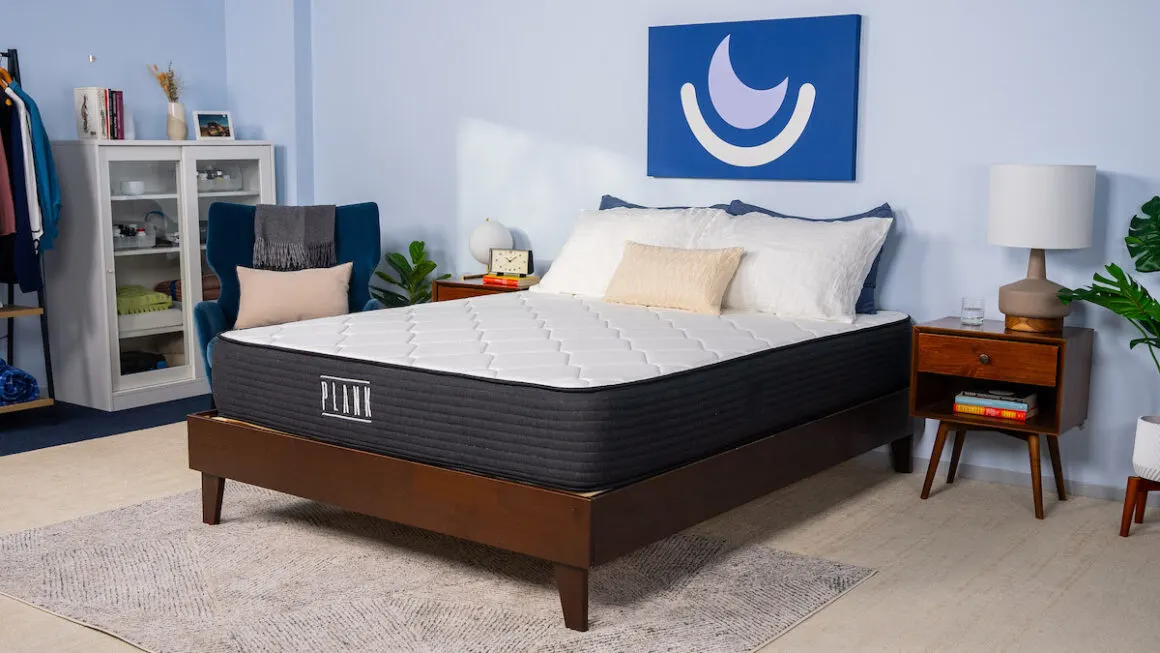
Ideal For
Heavy Sleepers
Firmness
Firm (7), Extra Firm (9)
Pain Relief
Fair
Value
Great Value
Pros & Cons

-
Pros
-
Exceptionally firm and supportive on each side
-
Provides sturdy pushback for back and stomach sleepers over 230 pounds
-
Both sides sleep quite cool
-
-
Cons
-
Neither side is soft enough for most side sleepers and people under 130 pounds
-
Subpar motion isolation due to the highly responsive surface
-
Our Take

Why We Like It
Back and stomach sleepers who weigh more than 230 pounds need extra reinforcement from their mattress compared with other sleeper types. The Plank Firm by Brooklyn Bedding is one of the firmest mattresses we’ve tested in our lab. This flippable all-foam model features two sleep surfaces: one that’s firm (7) and another that’s extra firm (9).
Standout Feature
Since very little sinkage occurs on either side, the budget-friendly Plank Firm sleeps quite cool and earned high marks during our temperature control tests. Exceptionally hot sleepers can also order a panel of phase change material (PCM) to be sewn onto both sides of the mattress.
Scoring & Details

The ratings below indicate how suitable this mattress is for different sleeping positions and sleeper weights, taking into account factors such as support and pressure relief.
Best Mattress for Pressure Relief
FloBeds vZone 12″ Natural Latex Mattress
$3,799 from FloBeds (queen)
$3,799 from FloBeds (queen)
The FloBeds vZone 12” Natural Latex Mattress stands apart from other latex mattresses with an option to pick different firmness levels for each half of the bed. It’s a great solution for co-sleepers with different firmness preferences.
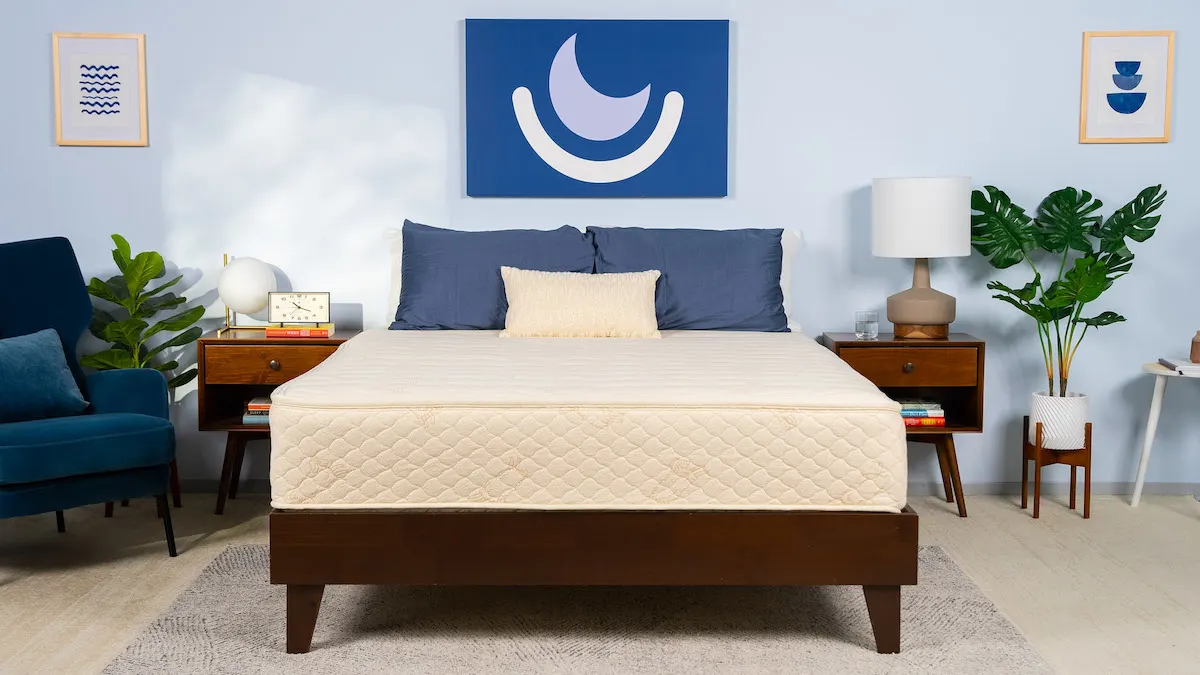
Ideal For
Couples
Firmness
Soft (3), Medium (5), Firm (7), Extra Firm (8)
Pain Relief
Excellent
Value
Fair Value
Pros & Cons

-
Pros
-
All-latex construction balances support with light contouring
-
Choice of four firmness options allows people with back pain to choose their best fit
-
Customizable design lets shoppers pick a separate firmness for each side of the bed
-
-
Cons
-
Carries a premium price-point
-
Ships in four boxes and owners need to assemble the mattress
-
Our Take

The FloBeds vZone 12” Natural Latex Mattress is composed entirely of Talalay latex, which gives the surface a responsive and buoyant feel that conforms gently to your body’s joints and curves. Latex does not compress as readily as foam, so you won’t need to worry about sinking too deep into the bed.
Why We Like It
Few beds offer the degree of customizability as the FloBeds vZone 12” Natural Latex Mattress. Since you can pick a different firmness level for each side of the bed, we highly recommend this mattress for couples with different firmness preferences. The mattress is also an excellent choice for hot sleepers, thanks to the natural coolness and breathability of latex. The all-latex design results in minimal heat retention.
Sleeper Type Ratings

The ratings below indicate how suitable this mattress is for different sleeping positions and sleeper weights, taking into account factors such as support and pressure relief.
Dr. Breus On Choosing a Mattress For Back Pain
Best Overall Mattress
WinkBeds EcoCloud
Get $300 off all mattresses at Winkbeds
SHOP NOWA balanced latex hybrid design that cushions the body.
SEE MORE DETAILS
Best Value Mattress
Brooklyn Bedding Signature Hybrid
Save 25% sitewide at Brooklyn Bedding
SHOP NOWA well-made, affordable mattress that earns high marks for pressure relief, cooling, and overall support.
SEE MORE DETAILS
Most Comfortable Mattress
DreamCloud Premier Memory Foam Mattress
Up to 50% off at DreamCloud
SHOP NOWAn all-foam model that delivers strong cushioning without sacrificing support.
SEE MORE DETAILS
Best Luxury Mattress
Saatva Rx
15% off orders of $1,000 or more
SHOP NOWA high achiever for motion isolation and pressure relief – two testing categories where hybrids often underperform.
SEE MORE DETAILS
Best for Side Sleepers
Bear Elite Hybrid
SHOP NOW
A distinct balance of cushioning and pushback across all three of the Bear Elite Hybrid’s firmness levels.
SEE MORE DETAILS
Best for Spinal Alignment
Back Science Series 2 Mattress
Check Price at Back Science
SHOP NOWDesigned specifically to try to support the spine and limit tension that can lead to aches and pains.
SEE MORE DETAILS
Best Extra Firm Mattress
Plank Firm
25% off sitewide with code: SUMMER25
SHOP NOWOne of the firmest mattresses we’ve tested in our lab – that also sleeps incredibly cool.
SEE MORE DETAILS
Best for Pressure Relief
FloBeds vZone 12″ Natural Latex Mattress
$3,799 from FloBeds (queen)
SHOP NOWA responsive and buoyant feel that conforms gently to your body’s joints and curves.
SEE MORE DETAILS
What Should Someone With Back Pain Consider in a Mattress?
For people with back pain, the ideal mattress keeps the spine in even alignment from the head to the pelvis. To find the right mattress, consider your body type and sleeping position, as well as several performance factors that affect a mattress’ ability to ease pain.
Sleeping Position, Body Weight, and Mattress Firmness
Your sleeping position significantly influences the mattress features necessary to promote spinal alignment. Side sleepers typically need a softer surface that lets the shoulder and hip areas sink into the bed’s surface, while back and stomach sleepers usually benefit from firmer support to prevent arching in the lower back.
At the same time, body weight plays a major role in determining suitable mattress firmness. People under 130 pounds often prefer a softer mattress, those over 230 pounds typically benefit from firmer beds, and sleepers in between those weight ranges often find comfort in a mattress with a mid-range feel.
Mattress Material
A mattress’ construction and materials affect its ability to relieve pressure and ease pain. Common mattress types include foam, innerspring, hybrid, latex, and airbed.
- Foam: Contours to the body; good for pressure relief
- Innerspring: Old-school responsiveness with a thin comfort layer
- Latex: Gently responsive and lightly contouring; often favored by back and stomach sleepers
- Hybrid: Balances contouring with support; versatile for all positions
- Airbed: Adjustable firmness for tailored back support
For back pain, we often recommend mattresses that strike a balance between contouring and support, such as one of the best hybrid mattresses featuring zoned support.
Zoned Support
Zoned support refers to mattresses that are constructed to provide varied firmness levels to different parts of the body. This feature can offer major benefits to sleepers with back pain, as it provides enhanced support to heavier areas like the midsection while allowing lighter areas to sink into the bed’s surface. Together, these zones can promote better spinal alignment and reduce stress on the back.
Pressure Relief
Pressure relief in mattresses involves the cushioning of pressure-prone areas to prevent discomfort and pain, particularly in the hips, shoulders, and lower back. Typically essential for those with back pain, effective pressure relief ensures a more comfortable sleep by minimizing stress on sensitive areas and promoting proper spinal alignment.
Is Your Mattress Making Your Back Pain Worse?
Your mattress may be causing or exacerbating back pain if it lacks the features needed to support your body weight and sleeping position. We’ve identified several signs that your mattress may be contributing to back pain:
- You frequently wake up with back pain: If your back pain starts when you get out of bed or gets worse in the morning, it may be a signal that your mattress is to blame.
- You no longer feel comfortable on your mattress: Another common sign of an unsupportive mattress is if you find yourself tossing and turning at night and have trouble finding a comfortable and pain-free position.
- Your mattress has reached the end of its lifespan: If your mattress is over 7 to 10 years old, it may have reached the end of its lifespan. Old mattresses often sag in the middle and no longer support healthy spinal alignment.
How to Prevent Back Pain While Sleeping
Finding relief from nighttime back pain can take some experimenting, so you may want to start by creating a back-friendly evening routine. Make time for relaxation, spend up to 15 minutes before bedtime with a heating pad on low, and bring several extra pillows or rolled up blankets into bed for targeted support.
Try Sleeping in a Different Position
Finding a comfortable sleeping position can help reduce strain on the back. Experts often recommend sleeping on your back with a pillow under your knees or in the fetal position with a pillow between your knees. Avoid stomach sleeping if possible, which can increase pressure on the spine and may lead to back strain.
Boost Your Mattress’ Feel with a Topper
A mattress topper is a quick and easy way to change the feel of your bed. Depending on your needs, you can opt for a topper that adds cushioning to relieve pressure points or one that increases firmness for better spinal alignment.
Use a Pillow that Aligns Your Neck and Spine
Selecting the best pillow for back pain with the right loft can help maintain alignment between your neck and spine, thus improving sleep posture and potentially reducing pain. Side sleepers generally benefit from a thicker pillow, back sleepers often prefer a medium loft, and stomach sleepers usually need a pillow with minimal loft to avoid straining the neck and arching the spine.
Consider Speaking With Your Doctor
If back pain persists or consistently disrupts your sleep, consult a health care professional. They can offer personalized advice and treatment options tailored to the cause of your back pain.
Discover More Mattress Solutions
In addition to this curated guide to the best mattresses for back pain, our product testers selected beds that we think will help alleviate other issues that can interfere with quality sleep.
How We Test
At the heart of our recommendations is a thorough, real-world testing methodology that we use to assess each mattress we review. We’ve honed our expertise over many years in the sleep product industry, learning everything we can along the way to help you find a mattress that feels comfortable and promotes healthy spinal alignment.
In testing mattresses for people with back pain, we paid close attention to factors like each bed’s construction and how well it balances support and pressure relief. Members of our testing team, who span a range of body types and sleep styles, helped us narrow down our picks to those that are best suited to different types of sleepers with back pain.
Frequently Asked Questions
Back pain can disrupt sleep by making it difficult to find the right position, fall asleep, and sleep consistently through the night. For people with chronic back pain, trouble sleeping can make back pain worse, leading to a cycle where poor sleep exacerbates pain, which in turn further disrupts sleep.
Your mattress may be causing back pain if you toss and turn and can’t find a comfortable position, if you consistently wake up with soreness, or if your mattress is past its expected lifespan of 7 to 10 years.
The ideal mattress firmness for back pain depends on your sleeping position and body weight. In general, the less a person weighs, the more likely they are to benefit from a soft mattress, with firmness preferences increasing as body weight increases.
At the same time, side sleepers are more likely to receive the pressure relief they need from softer beds, while back sleepers typically require firmer pushback to keep the back and spine on an even plane. Stomach sleepers usually trend toward the firm end of the spectrum, since beds that are too soft can result in uncomfortable arching of the spine.
The best mattress type varies based on your individual needs and preferences. While several mattress types offer a good mix of cushioning and support, we’ve found that hybrids are often the best for back pain, as they combine the supportive properties of coils with the pressure relief of foam or latex layers.
The best sleeping position for back pain is typically on your back or side, as both allow for proper spinal alignment in the right circumstances. Try sleeping on your back with a blanket rolled up under your knees or sleeping on your side with a pillow between your knees. Stomach sleeping is generally not recommended as it can trigger or exacerbate back pain.
Ask the Sleep Doctor
Have questions about sleep? Submit them here! We use your questions to help us decide topics for articles, videos, and newsletters. We try to answer as many questions as possible. You can also send us an email. Please note, we cannot provide specific medical advice, and always recommend you contact your doctor for any medical matters.
